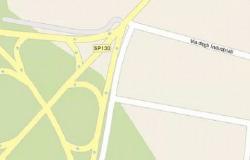Many useful tips were given by the many speakers to the administrator who spoke and to the audience, for correct maintenance, sorry, “care” of public green areas (because trees are indeed living organisms).
The president of the agronomists’ association, Dr. Milillo spoke about the importance of public green spaces for the decorum of the city, the climate, liveability and even for the psychophysical well-being induced on human beings. If urban greenery is abundant and thriving, it can save 30% on healthcare costs.
The Dr. Guerra explained the procedures prior to tree felling: the analytical report on each individual tree, the assessment of its stability and related phytostatic risk, the results of the instrumental tests to evaluate the integrity of the internal structure.
Another interesting point: you cannot think of building new parks if the existing ones are in a state of abandonment.
Our Villa Comunale immediately comes to mind, which this year celebrates the bicentenary of its inauguration, and which is in that pitiful state that we all know well. In the meantime, the Administrators are preparing to build a new park in the Angelini area: a great waste of resources if we have not one but two abandoned parks. The design of a new park or the simple planting of a street or square must have rational bases, therefore it must be drawn up by competent professionals: the most suitable type of plants to use, the distance from buildings, access to irrigation sources, the compatibility of the plant with the planting area. We have many examples of plants that have dried up in the city because they are not irrigated. For example in the Eurospin parking area, in via Barletta.
If paving is provided around the trees, this does not affect the development of roots and trunks which can cause the road surface to rise. Think of the havoc that was created in Piazza Gradenico and along Via Martiri in Palermo by the emerging roots of pine trees. The pine trees are certainly not to blame! Tree pruning must be carried out in a workmanlike manner: a healthy or diseased tree should never be pollarded, a barbaric practice unfortunately widely used in Trani, which compromises the health of the plant and the development of the leaf system
If a plant is sick it must be treated using endotherapy, i.e. a specific phytosanitary treatment for tall trees. The technique consists in carrying out injections of specific pesticide pesticides into the tree through the bark of the trunk. In Trani there were conflicting attitudes. The holm oaks in Piazza della Repubblica were saved from cochineal a few years ago thanks to an effective endotherapy intervention. However, the same attention was not paid to the numerous palm trees in Piazza Quercia, along the port, and in the Villa Comunale, attacked by the red weevil. Ultimately, the recurring concept repeated by all speakers on the need for the administration to share and talks with citizens and associations regarding the most impactful green interventions, such as demolitions, has in fact been completely ignored by our administrators and the so-called experts who manage green areas in Trani on their behalf. Citizens must tell this administration that the time for improvisation is over and that such a delicate and important matter, such as the management of public green spaces, be entrusted to truly competent and experienced professionals (agronomists, botanists, landscape architects).
Citizens must say to themselves: whether we like it or not, we too must take care of the health of public green spaces.





